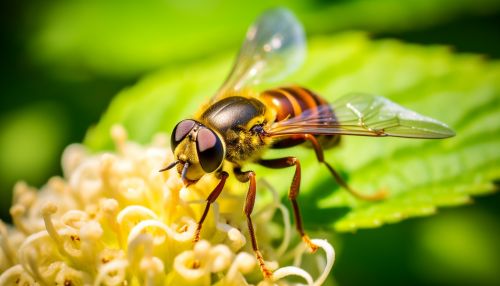Mimicry
Introduction
Mimicry, in biological terms, refers to the similarity of one species to another which protects one or both. This phenomenon is a product of natural selection, and it results in an advantageous biological characteristic being copied or mimicked by another species. Mimicry can be observed in various forms across the animal kingdom, from insects to mammals.


Types of Mimicry
There are several types of mimicry, each with unique characteristics and evolutionary benefits.
Batesian Mimicry
Named after the English naturalist H.W. Bates, Batesian mimicry is a form of mimicry where a harmless species has evolved to imitate the warning signals of a harmful species directed at a common predator. For example, the non-venomous king snake has a similar color pattern to the venomous coral snake, which deters potential predators.
Müllerian Mimicry
Proposed by German naturalist F. Müller, Müllerian mimicry is a natural phenomenon in which two or more harmful species, that may or may not be closely related and share one or more common predators, have come to mimic each other's warning signals. An example of this is seen in different species of stinging bees and wasps.
Aggressive Mimicry
Aggressive mimicry is a form of mimicry in which predators or parasites share similar signals with a harmless model, allowing them to avoid being correctly identified by their prey or host. An example of this is the angler fish, which uses a protruding piece of its body as a lure, resembling a smaller fish or worm.
Automimicry
Automimicry, or intraspecific mimicry, occurs within a single species. One part of the organism resembles another part, or the juvenile resembles the adult, in order to provide some advantage. For example, a harmless part of an animal may mimic a harmful part, such as a tail appearing to be a head.
Evolution of Mimicry
The evolution of mimicry is driven by natural selection. The mimic and model species have a mutualistic relationship, where both species benefit from the other's existence. The mimic benefits from the model's defense mechanism, while the model benefits from the reduced predation pressure.
Role in Ecosystem
Mimicry plays a crucial role in the survival and propagation of species. It can protect species from predation, increase their chances of reproduction, and allow them to exploit different ecological niches. Mimicry also contributes to the balance of ecosystems by influencing predator-prey dynamics.
Human Influence on Mimicry
Human activities such as habitat destruction, pollution, and climate change can impact mimicry systems. Changes in environmental conditions can disrupt the delicate balance of mimicry systems, leading to a loss of biodiversity.
